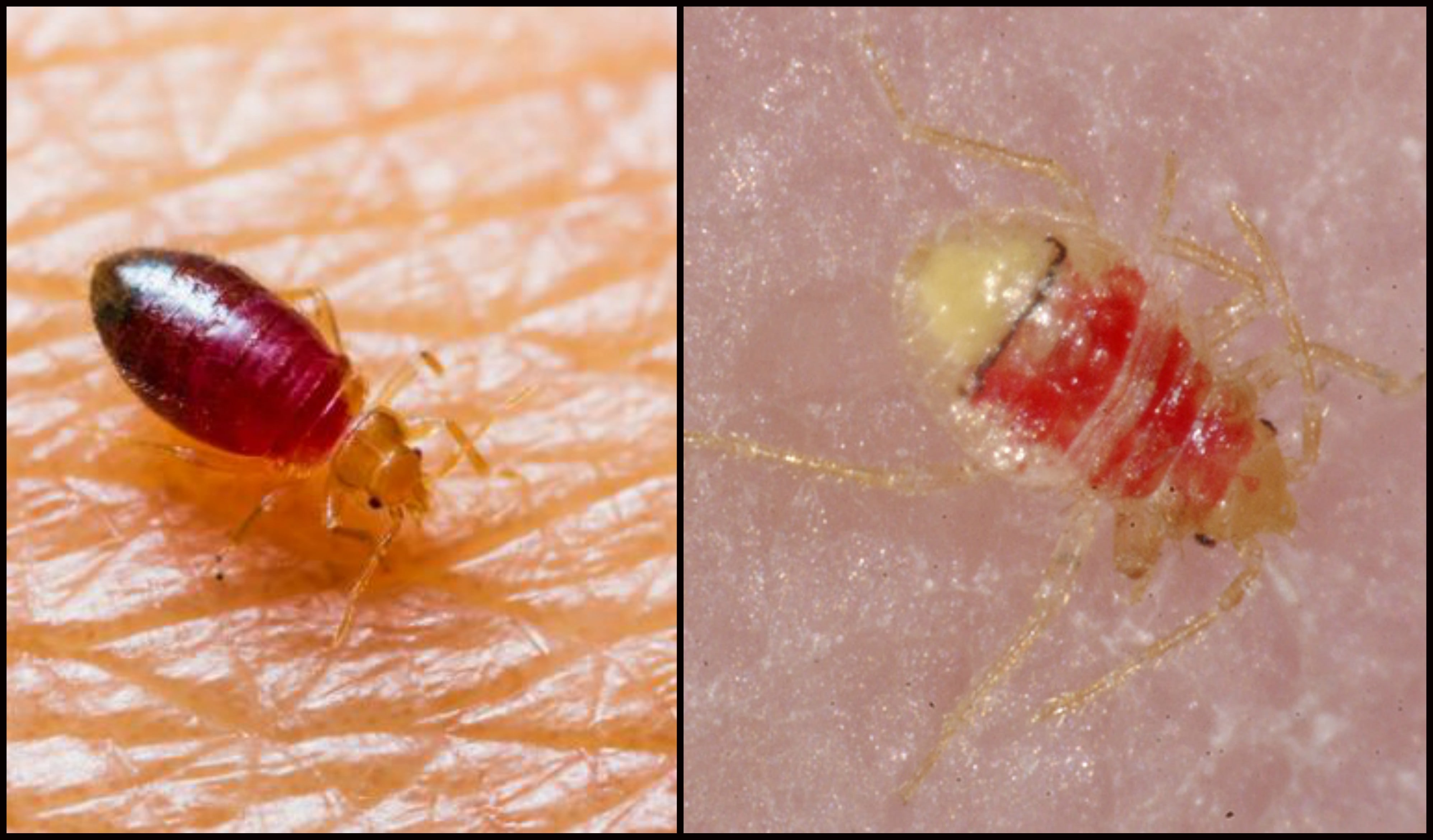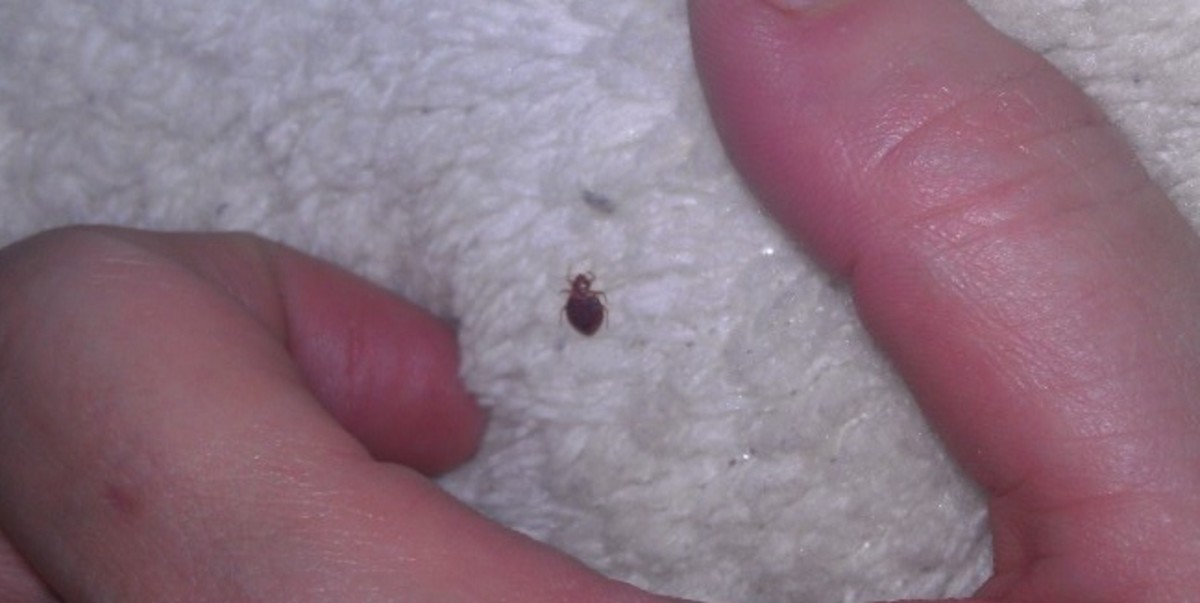
Before their first blood meal they are pale, translucent yellowish white color. First Instar Bed Bugs are tiny and hard to detect even with a magnifying glass unless they are moving. An entomological term meaning that upon emerging from an egg, the “Nymph”, or “First Instar” is a tiny version of the adult although without reproductive capabilities. Bed Bugs exhibit a form of insect biology called “Gradual Metamorphosis”. While within their safe harborage areas, they utilize their blood meals and molt into the next stage of their life cycle. Being crushed and leaving Blood smears on sheets or pillows are often the result of us turning in bed while they are feeding or retreating to a Bed Bugsharborage area. They stay near, but due to their frailty, seek harborage in the safest places within and around our sleeping areas, waiting until they need their next meal. Needing only a blood meal every few days while not endangering its host outside of simple dermal reactions, which some of us never experience, Bed Bugs make a silent peace with those they depend upon for survival. Bed Bugs seem to take a more symbiotic approach with humans. The Panama Canal almost never came into being due to our ignorant intrusion into their world. Malaria, along with other diseases transmitted by mosquitoes has been a constant threat to mankind before and throughout recorded history.
#Are bed bugs hard to squish series#
This series of events decimated a third of the population of Europe in the not so distant past.

In comparison, Bubonic Plague, often called the Black Death of Europe, was the result of a pathogen within fleas and carried by rodent hosts, then being transferred to humans through cohabitation. No pathogen or disease has been documented or proven to be transferred through an Bed Bugsencounter with the Bed Bug. Although other parasites such as fleas and mosquitos seem far more intrusive into to our everyday lives, no other parasitic insect seems to evoke fear and social stigma more than the Bed Bug. International travel, multiculturalism and other factors have been catalysts for the propagation of this species of pervasive insect into the modern world.

Beaten back somewhat by 20th century technology and materials, the 21st century Bed Bug has raised it’s true Bug self into a dominant pest throughout modern society. We now make reference to them as the Bed Bug. Humans! Over time a new species came into being. Originally being a species favoring the blood of bats, cohabitating with our fellow flying mammals in the distant past gave a few of these opportunistic creatures a more easily obtainable food source. Truth be known, these insects have followed us throughout the course of human history for longer than most of us can imagine. It’s only after this process that most Bed Bug situations are discovered for what they are and so many times, panic ensues.īed Bugs Most of us have only known this small parasitic insect through a well-known saying, “Sleep tight, and don’t let the bed bugs bite”. From this point, a Bed Bug population can expand exponentially and become a major problem.

After several molts, Bed Bugs reach sexual maturity and begin laying eggs. These discarded exoskelet ons are one of several things to look for when inspecting for Bed Bug activity. In order to grow from one stage to another, Bed Bugs must discard these exterior shells of protection through a process called “Molting”.The exoskeleton splits apart and enables the Bed Bug to emerge and grow into the next larger stage. Being crushed and leaving Blood smears on sheets or pillows are often the result of us turning in bed while they are feeding or retreating to a Bed Bugs harborage area. Humans!īed Bugs only need a blood meal every few days while not endangering its host outside of simple dermal reactions Due to their frailty,they seek harborage in the safest places within and around our sleeping areas, waiting until they need their next meal. Truth be known, these insects have followed us throughout the course of human history Originally being a species favoring the blood of bats, cohabitating with our fellow flying mammals in the distant past gave a few of these opportunistic creatures a more easily obtainable food source. Most of us have only known this small parasitic insect through a well known saying, “Sleep tight, and don’t let the bed bugs bite”.


 0 kommentar(er)
0 kommentar(er)
